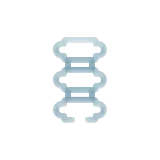Vector Selection Guide
Helping you identify which sereotype(s) and promoter(s) to select when designing your AAV constructs.
Understanding AAV Serotype Selection
The cards below will summarize the tissue tropism and transducibility of different AAV serotypes for your ease of selection.
Key Notes: that no one AAV serotype is exclusive to a particular tissue or cell-type. However, some AAV serotypes transduce certain tissues more effectively than other serotypes.
Select AAV Serotype Based on Tissue Tropism

Brain: Neurons

Brain: Non Neuronal Cells

Ocular

Lungs

Heart

Liver

Kidneys

Intestines

Muscle

Lymph Nodes

Spine

Salivary Glands

Ears

Pancreas

Testicular Tissue
Commonly Used Naturally Occurring Serotypes
AAV 1
AAV 2
AAV 3
AAV 4
AAV 5
AAV 6
AAV 7
AAV 8
AAV 9
AAV 10
AAV 11
AAV 12
AAV 13
Rh74
Modified/Synthetic AAV Capsids
Still can’t find the right products for your research? Reach out to us directly and we will help you identify the one you need.
Understanding AAV Serotype Selection
The cards below will summarize the tissue tropism and transducibility of different AAV serotypes for your ease of selection.
Key Notes: that no one AAV serotype is exclusive to a particular tissue or cell-type. However, some AAV serotypes transduce certain tissues more effectively than other serotypes.
placeholder





